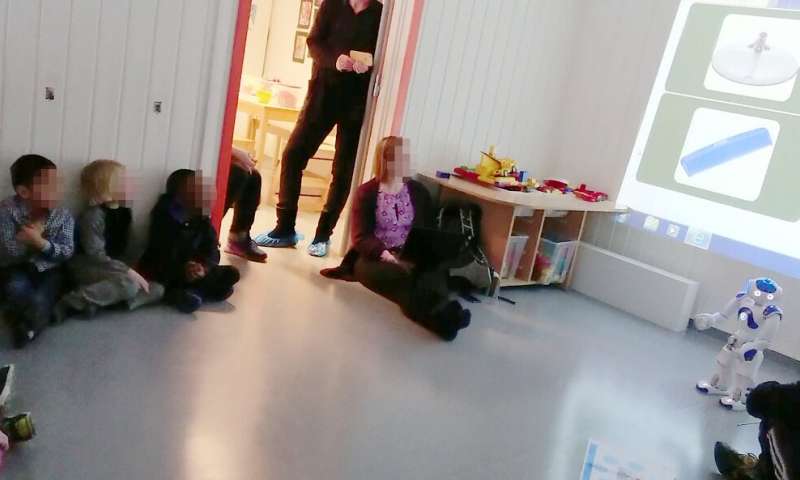HOME
Using social robots to improve children's language skills

As robots share many characteristics with toys, they could prove to be a valuable tool for teaching children in engaging and innovative ways. In recent years, some roboticists and computer scientists have thus been investigating how robotics systems could be introduced in classroom and pre-school environments.
To explore the value of social robots in education, researchers at the Norwegian Computing Center recently tried to use them to teach Norwegian to immigrant children residing in the Grorud district in Oslo. Their paper, pre-published on arXiv and presented as a late-breaking report at this year's ACM's Human-Robot Interaction (HRI) Conference, demonstrates some of the possible benefits of introducing robotic systems within early learning environments.
"The main inspiration for our study was the fact that some districts in Oslo have a large number of children that do not speak Norwegian at home," Trenton Schulz and Till Halbach, two of the researchers who carried out the study, told TechXplore. "Daycare centers have programs to help these children learn Norwegian. One of these programs, called 'language shower,' is designed to expand the children's vocabulary. Our study explored the possibility of using robots to deliver this program."
The basic idea behind the study carried out by Schulz, Halbach and their colleague Ivar Solheim was to support teachers delivering the language learning program using a social robot. This program is currently offered to children aged three to six at local daycare centers in Oslo's Grorud district, but it also has an additional component that can be provided to the children's families to help them practice their language skills at home.
News Source